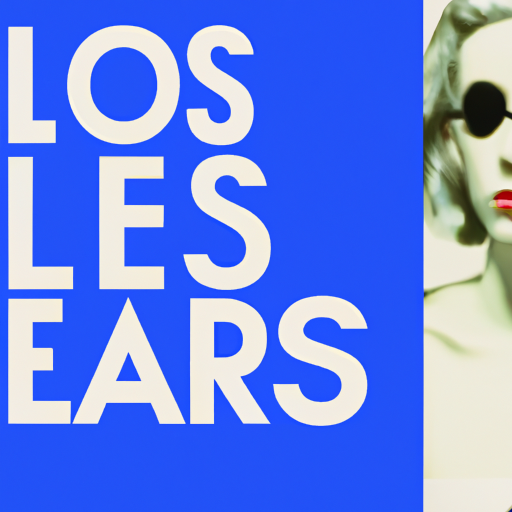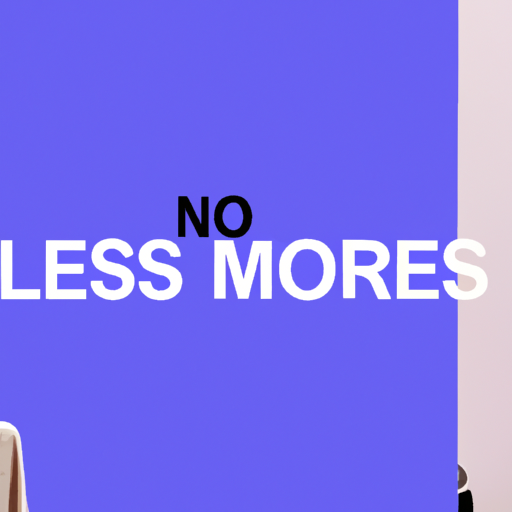
-
Table of Contents
- Minimalist Poster Design: Less is More
- The Principles of Minimalist Poster Design
- The Benefits of Minimalist Poster Design
- Creating Compelling Minimalist Posters
- 1. Define Your Message
- 2. Use a Limited Color Palette
- 3. Embrace Whitespace
- 4. Typography Matters
- 5. Focus on Symbolism
- 6. Experiment with Composition
- 7. Test and Iterate
- Case Studies: Successful Minimalist Poster Designs
- 1. Apple’s “Think Different” Campaign
- 2. The Movie Poster for “Drive”
- 3. Nike’s “Just Do It” Campaign
- Summary
Minimalist Poster Design: Less is More

When it comes to poster design, the saying “less is more” holds true. Minimalist poster design has gained popularity in recent years due to its simplicity and effectiveness in conveying a message. In this article, we will explore the principles of minimalist poster design, its benefits, and provide valuable insights on how to create compelling minimalist posters.
The Principles of Minimalist Poster Design
Minimalist poster design follows a set of principles that focus on simplicity, clarity, and visual impact. By stripping away unnecessary elements, minimalist posters can effectively communicate a message and capture the viewer’s attention. Here are the key principles of minimalist poster design:
- Simplicity: Minimalist posters use a limited color palette, typography, and imagery to convey the message. The design is clean, uncluttered, and free from unnecessary details.
- Whitespace: Whitespace, also known as negative space, plays a crucial role in minimalist poster design. It helps to create a sense of balance, highlight important elements, and improve readability.
- Typography: Minimalist posters often feature bold and simple typography. The choice of font and its placement are carefully considered to enhance the overall design and convey the message effectively.
- Visual Hierarchy: Minimalist posters use visual hierarchy to guide the viewer’s attention. Important elements are emphasized through size, color, or placement, while less important elements are kept subtle.
- Symbolism: Minimalist posters often rely on symbolism to convey a message. By using simple and recognizable symbols, the poster can communicate complex ideas in a concise and impactful way.
The Benefits of Minimalist Poster Design
Minimalist poster design offers several benefits that make it a popular choice for designers and advertisers. Understanding these benefits can help you appreciate the power of minimalist design and its impact on the viewer:
- Clarity: By removing unnecessary elements, minimalist posters can convey a message with clarity. The simplicity of the design allows the viewer to focus on the main idea without distractions.
- Memorability: Minimalist posters often leave a lasting impression on the viewer due to their unique and striking design. The simplicity and visual impact make them memorable and easily recognizable.
- Timelessness: Minimalist design has a timeless quality that can withstand changing trends. By focusing on essential elements, minimalist posters can remain relevant and effective for years to come.
- Flexibility: Minimalist design can be applied to various subjects and industries. Whether it’s a movie poster, a product advertisement, or an event promotion, minimalist design can adapt to different contexts and still deliver a powerful message.
- Attention-Grabbing: The simplicity and visual impact of minimalist posters make them highly effective in grabbing the viewer’s attention. In a world filled with visual noise, minimalist design stands out and demands attention.
Creating Compelling Minimalist Posters
Now that we understand the principles and benefits of minimalist poster design, let’s explore some valuable insights on how to create compelling minimalist posters:
1. Define Your Message
Before starting the design process, it’s essential to define the message you want to convey. A clear and concise message will guide your design choices and ensure that your minimalist poster effectively communicates the intended idea.
2. Use a Limited Color Palette
Minimalist posters often use a limited color palette to maintain simplicity and visual harmony. Choose colors that complement each other and align with the mood and message of your poster. Remember, less is more when it comes to color selection.
3. Embrace Whitespace
Whitespace is a powerful tool in minimalist design. Embrace whitespace to create a sense of balance, highlight important elements, and improve readability. Don’t be afraid of empty spaces; they can enhance the overall impact of your poster.
4. Typography Matters
Choose typography that aligns with the mood and message of your poster. Bold and simple fonts work well in minimalist design. Experiment with different font sizes, weights, and placements to create visual interest and hierarchy.
5. Focus on Symbolism
Symbolism is a key element in minimalist poster design. Use simple and recognizable symbols to convey complex ideas. The right symbol can evoke emotions and create a strong connection with the viewer.
6. Experiment with Composition
Composition plays a crucial role in minimalist design. Experiment with different layouts, alignments, and placements to find the most visually appealing arrangement. Remember to maintain balance and harmony throughout your design.
7. Test and Iterate
Once you have created your minimalist poster, test it with your target audience and gather feedback. Iterate on your design based on the feedback received to ensure that your poster effectively communicates the intended message.
Case Studies: Successful Minimalist Poster Designs
Let’s take a look at some successful examples of minimalist poster designs:
1. Apple’s “Think Different” Campaign
Apple’s “Think Different” campaign is a classic example of minimalist poster design. The posters featured a simple black background with a single image of a notable figure and the Apple logo. The minimalistic approach conveyed the message of individuality and creativity, aligning with Apple’s brand values.
2. The Movie Poster for “Drive”
The movie poster for “Drive” is another excellent example of minimalist design. The poster featured a simple image of Ryan Gosling’s character wearing a scorpion jacket against a pink background. The minimalistic approach created intrigue and captured the essence of the movie’s style and mood.
3. Nike’s “Just Do It” Campaign
Nike’s “Just Do It” campaign is known for its minimalist design approach. The posters featured a bold and simple typography with the iconic Nike logo. The minimalistic design allowed the message to take center stage, inspiring viewers to take action and embrace a can-do attitude.
Summary
Minimalist poster design is a powerful and effective way to convey a message with simplicity and impact. By following the principles of minimalist design, such as simplicity, whitespace, typography, visual hierarchy, and symbolism, you can create compelling posters that grab attention and leave a lasting impression. Remember to define your message, use a limited color palette, embrace whitespace, choose typography carefully, focus on symbolism, experiment with composition
